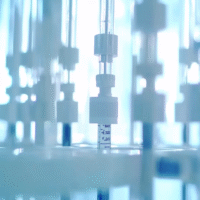Understanding the Trial Results
The study looked at a treatment called photodynamic therapy (PDT) to see how it affects plaque and bacteria in the mouths of people with braces. It compared PDT to other common treatments like chlorhexidine (CHX) and a fluoride varnish. Here’s what they found:
What Worked:
- PDT and CHX helped reduce plaque better than not using any treatment.
- Both PDT and CHX showed lower levels of bacteria in the mouth compared to the control group.
- No new white spots (early signs of tooth decay) were seen in patients using PDT or CHX.
- Patients using PDT had fewer advanced lesions compared to others.
What Didn’t Work:
- PDT, CHX, and fluoride varnish did not significantly reduce bacteria below the gum line compared to the control group.
How This Helps Patients and Clinics:
- Patients with braces can benefit from PDT as a safe way to manage plaque and bacteria.
- Clinics can offer PDT as an effective alternative to traditional treatments, helping to maintain better oral health during orthodontic treatment.
Real-World Opportunities for Hospitals and Doctors:
- Introduce PDT as a standard treatment option for patients with braces.
- Educate patients about the benefits of PDT and its effectiveness in preventing plaque buildup.
Measurable Outcomes to Track:
- Amount of plaque present in patients’ mouths.
- Levels of bacteria in both supragingival (above the gum line) and subgingival (below the gum line) areas.
- Presence of white spot lesions on teeth.
- Overall gum health scores.
AI Tools for Clinics:
- Consider using AI-based tools for tracking oral health metrics and predicting treatment outcomes based on patient data.
Step-by-Step Plan for Clinics:
- Start by educating staff about PDT and its benefits.
- Begin offering PDT to a small group of patients to monitor results.
- Gather feedback and data on plaque levels and patient satisfaction.
- Gradually expand the use of PDT based on positive outcomes.
For more details on this research, you can view the full study here.



























